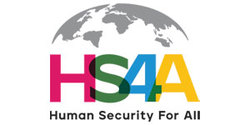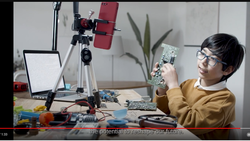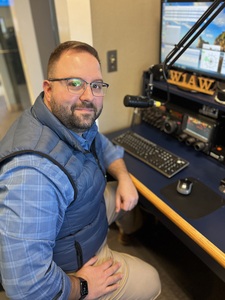 February 23, 2023 John E. Ross, KD8IDJ, Editor
| ||||||
2022 Roanoke Division ARRL Service Award Recipient Selected John Gendron, NJ4Z, has been named the recipient of the 2022 Roanoke Division ARRL Service Award. This award is the highest and most prestigious recognition of an ARRL member operator within the Division's four states who has shown consistent and extensive leadership.
First licensed as a Technician in 2016, Gendron quickly advanced to the General- and Amateur Extra-class licenses. At the same time, he helped revitalize the Amateur Radio Emergency Service® (ARES®) in his area, as well as the York County Amateur Radio Society (YCARS) in Rock Hill, South Carolina. Gendron's story about reinvigorating YCARS is featured in the "Club Station" column in the September 2022 issue of QST . He also has a YouTube channel, "From the Hamshack," is an avid DX chaser, and can often be found activating parks for Parks on the Air (POTA). Gendron is the 55th recipient of the Roanoke Division ARRL Service Award, which began in 1968 and is bestowed annually. Judges for the award are past recipients. The award is also nicknamed the Vic Clark Award after one of the original winners, Victor Clark, W4KFC (SK), who was a Roanoke Division Director and ARRL President. The list of all 55 winners, as well as a history of the award, can be found on the Roanoke Division's website. Nominations for the 2023 Roanoke Division ARRL Service Award recipient will open in January 2024. Amateur Radio on the International Space Station Seeking Contact Proposals The Amateur Radio on the International Space Station (ARISS) program is seeking formal and informal educational institutions and organizations, either individually or working together, to host an amateur radio contact with a crew member on board the International Space Station (ISS).
The deadline to submit a proposal is March 31, 2023. Proposal information and more details, such as expectations, proposal guidelines, and the proposal form, can be found at https://www.ariss.org/apply-to-host-an-ariss-contact.html. An ARISS introductory webinar will be held March 1, 2023, at 8:00 PM EST. The Eventbrite link to sign up for the free webinar is https://www.eventbrite.com/e/ariss-proposal-webinar-for-spring-2023-proposal-window-registration-515706320487. ARISS is a cooperative venture of international amateur radio societies and the space agencies that support the ISS. The United States sponsors are ARRL, the Radio Amateur Satellite Corporation (AMSAT), Amateur Radio Digital Communications (ARDC), NASA's Space Communications and Navigation program (SCaN), and the ISS National Lab Space Station Explorers (SSE). W8LT - A History of Amateur Radio at Ohio State University W8LT is the call sign for the Amateur Radio and RF Club at The Ohio State University (OSU). The university club has a long history, and archive records indicate that 1926 was the year it officially became a club, likely making it the oldest one on campus. W8LT is just 3 years shy of celebrating its 100th anniversary. In the early 1920s, the call sign started out as 8LT, until the Radio Act of 1927 added a "W" to all radio call signs. Then, W8LT had been closely associated with WOSU Radio, the university's non-commercial station, which began as WEAO in June of 1922. The two stations were believed to have shared a small building near campus until the mid-1950s. In 1957, both stations were moved to small military-style Quonset huts. From July 1961 to January 1963, the club was unable to find a location anywhere on campus, so all of their equipment was put into storage in club member Bill Hale's, K8JIX, basement and brought out only for ARRL Field Day each June. Eventually, W8LT found a new home in the bell tower at Ohio Stadium, a room directly below where the bell rings after every home-game win. That location allowed a 500-foot-long wire antenna to be stretched from the tower to a nearby smokestack at OSU's power station. The result was a very powerful signal that could be heard clearly on stations around the world. When Ohio Stadium was renovated, W8LT moved again, this time to Bevis Hall, where it remains today near the location of the old military - style Quonset huts. Today, the club continues to grow with 15 active members, including students, staff, and alumni. Faculty Advisor Larry Feth, K8HTC, said that the club takes every opportunity to recruit new members and offer license testing sessions. More information is available on the W8LT website and on their Facebook page. W8LT is an ARRL Affiliated Club and participates in the ARRL Collegiate Amateur Radio Program. World Amateur Radio Day Theme: Human Security for All The International Amateur Radio Union (IARU) announced that Human Security for All (HS4A) will be this year's theme of World Amateur Radio Day on April 18, 2023.
The day is being celebrated with a 2-week operating event occurring April 11 - 25. Special event stations will be operating from around the world, making two-way radio contacts to call attention to the HS4A campaign. The concept of human security measures the security of an individual by things essential to one's well-being. This includes economics, food, health, the environment, personal factors, the community, and political factors. Amateur radio is uniquely positioned to address those challenges by promoting technical knowledge, practical skills, innovative technology, and the deployment of backup systems at the community level that can be called upon in times of emergency. IARU, a federation of the national amateur radio societies of over 150 countries worldwide, is the global advocate for amateur radio through its Sector Membership in the International Telecommunication Union, an agency of the U.N., and other activities. The United Nations Trust Fund for Human Security and the World Academy of Art and Science are partnering with IARU in the campaign. In a release, the partners wrote, "Amateur radio has repeatedly demonstrated its ability to address human security needs. It is a truly global communications medium comprising some three million radio enthusiasts connecting communities and the peoples of the world." Click the image below to watch a video about HS4A: ARRL Welcomes Kevin Beal, K8EAL, as the Director of Development Kevin Beal, K8EAL, has joined ARRL staff as the Director of Development.
He has a significant background in nonprofit administration, and for the last 17 years, has managed large-scale projects and teams. His previous experience includes various roles supporting organizations and higher education institutions with program management, events, alumni engagement, and fundraising. Beal has also worked on cybersecurity infrastructure training projects supported by the Federal Emergency Management Association (FEMA) and feels that amateur radio has significant value as an emergency communications tool. With a father who was an electronics engineer during Vietnam in the US Army Signal Corps, Beal has been surrounded by radio his whole life. "I grew up in a household of spare electronics and communications equipment where at-home repair and soldering were commonplace," he said. He's excited to grow as a licensed ham and was thrilled to make a contact from the Hiram Percy Maxim Memorial Station as W1AW. He joins ARRL after a career at his alma mater, Norwich University, from which he earned a bachelor's degree and a master's degree in international conflict management and resolution. As a cadet at Norwich University, he participated in the Naval and Marine Reserve Officers' Training Corps (NROTC) as a part of the cadre training new cadets, and he was a member of the Cavalry Troop. Beal looks forward to getting to know ARRL donors. He and his wife live in Connecticut near ARRL Headquarters with their two daughters and their rescued hound. On most weekends during the winter, he can be found on the road taking his oldest daughter to her next hockey game. Amateur Radio in the News ARRL Public Information Officers, Coordinators, and many other member-volunteers help keep amateur radio and ARRL in the news. "Cache Valley students made live contact with an astronaut in space" / Utah Public Radio (Utah), February 10, 2023. -- Ridgeline High School Cache County District. "Ham radio operators and their role with sled dog safety" / WJMN TV (Michigan), February 17, 2023. -- Al Augustyn, W8FYZ, is Secretary of the Marquette Radio Repeater System. "Schofield club excels in international radio outreach" / Aiken Standard (South Carolina), February 20, 2023. -- The Schofield Amateur Radio and Technology Club. ARRL Podcasts On the Air ARRL Audio News The On the Air podcast is available on iTunes (iOS) and Stitcher (Android). The On the Air podcast and ARRL Audio News are also on blubrry -- On the Air | ARRL Audio News. In Brief... The rescue and recovery operations continue after a 7.8-magnitude earthquake struck Turkey on February 6, with casualties reaching nearly 46,000. Another earthquake, this time with a magnitude of 6.4, hit the country on Tuesday, February 21, 2023. More casualties and injuries are expected. Amateur radio continues to be the major link for communication for the entire area throughout both earthquakes. Turkish amateur radio operator Aziz Sasa, TA1E, has been at the disaster areas coordinating frequencies for the teams and carrying out search and rescue operations. On Tuesday, Sasa was interviewed on the British Broadcasting Corporation's (BBC) Digital Planet program, where he talked about the continued amateur radio help during the disaster. An audio link to the program is available here. While the entire program lasts 46 minutes, the interview with Sasa is within the first 6 minutes. The K7RA Solar Update Tad Cook, K7RA, of Seattle, Washington, reports for this week's ARRL Propagation Bulletin, ARLP008:
Solar activity plunged this reporting week, although there was some excitement on February 17, 2023, when the solar flux was reported as a record breaking 343.1. Because it was the noon reading, it is still reported by the National Oceanic and Atmospheric Administration (NOAA) as the solar flux, but this was a false reading when the Penticton detectors were overloaded by energy from a solar flare. So, in this report, I have chosen the 1800 UTC flux value, which was 165. The average daily sunspot number plunged from 182.4 to 107, while the average solar flux dropped from 196.4 to 162.4. If I had not changed the 343.1 to 165, the solar flux average would have been 187.9. Six new sunspots emerged over the week, one on February 16, one each on February 18 and 19, and three more on February 20. The solar flux prediction for the next month shows a peak value of 180 for March 7 - 13. Predicted values are 150 on February 23; 148 on February 24 - 25; 146 on February 26 - 27; 142 on February 28; 140 on March 1; 145 on March 2 - 3; 150, 155, and 165 on March 4 - 6; 180 on March 7 - 13; 175 and 170 on March 14 - 15; 160 on March 16 - 17; 155, 160, 150, 140, and 135 on March 18 - 22; 125 on March 23 - 24; 130 on March 25, and 140 on March 26 - 28. Predicted planetary A index is 8 on February 23 - 24; 10, 5, and 12 on February 25 - 27; 18, 16, and 8 on February 28 - March 2; 5 on March 3 - 4; 15, 18, 15, and 8 on March 5 - 8; 5 on March 9 - 14; 15 on March 15; 8 on March 16 - 17; 5 on March 18 - 20; 10 on March 21 - 23; 5 on March 24 - 25, and 8 on March 26 - 27. Jon Jones, N0JK, wrote: "There was a nice 6-meter F2 opening on February 16. I logged [the] HC1MD/2 grid FI57 on 50 MHz FT8 at 1916 UTC. I found this opening by checking the DXMaps website. HC1MD/2 had a strong, steady signal. I operated from home using an attic dipole antenna. [I] also logged HC2FG. Other area 6-meter operators such as WQ0P (EM19) and KF0M (EM17) also worked stations in Chile. The K index was 4, which I suspect may have helped. On February 18, a number of North American stations worked Robert Felicite, 3B9FR, around 1600 UTC on 6-meter FT8. (3B9FR is on Rodrigues Island in the Indian Ocean, off the southeast coast of South Africa) Conditions were great [during] the ARRL [International] DX CW Contest on 10 meters. I operated [for] a couple of hours [on] Sunday morning [while] running 5 W and a quarter-wave whip fixed mobile. [I] worked [more than one] hundred stations [between] Europe, the Caribbean, South America, and Africa. Many of the Europeans were over S-9." Sunspot numbers for February 16 - 22 were 101, 86, 109, 112, 135, 106, and 100, with a mean of 107. The 10.7-centimeter flux was 163.2, 165, 167.2, 169, 159.8, 160.9, and 151.9, with a mean of 162.4. Estimated planetary A indices were 24, 6, 6, 7, 8, 17, and 6, with a mean of 10.6. The middle latitude A index was 21, 4, 5, 4, 6, 15, and 4, with a mean of 8.4. Send your tips, questions, or comments to k7ra@arrl.net. A comprehensive K7RA Solar Update is posted Fridays on the ARRL website. For more information concerning radio propagation, visit the ARRL Technical Information Service, read "What the Numbers Mean..." and check out the Propagation Page of Carl Luetzelschwab, K9LA. A propagation bulletin archive is available. For customizable propagation charts, visit the VOACAP Online for Ham Radio website. Share your reports and observations. A weekly, full report is posted on ARRL News.
Just Ahead in Radiosport Year-long -- ARRL Volunteers On the Air (VOTA). See also the State Activations Schedule for weekly W1AW Portable Operations including these:
Upcoming Contests:
Visit the ARRL Contest Calendar for more events and information.
Upcoming Section, State, and Division Conventions
Search the ARRL Hamfest and Convention Database to find events in your area. Have News for ARRL? Submissions for the ARRL Letter and ARRL News can be sent to news@arrl.org. -- John E. Ross, KD8IDJ, ARRL News Editor
ARRL -- Your One-Stop Resource for
Subscribe to...
Free of charge to ARRL members...
| ||||||
.jpg)
 ARISS anticipates the contact will be held between January 1, 2024, and June 30, 2024. Crew scheduling and ISS orbits will determine the exact contact dates. To maximize these radio contact opportunities, ARISS is looking for organizations that will draw large numbers of participants and integrate the radio contact into a well-developed education plan.
ARISS anticipates the contact will be held between January 1, 2024, and June 30, 2024. Crew scheduling and ISS orbits will determine the exact contact dates. To maximize these radio contact opportunities, ARISS is looking for organizations that will draw large numbers of participants and integrate the radio contact into a well-developed education plan.


.jpg)

-2023-small.jpg)
-Blue.jpg)








